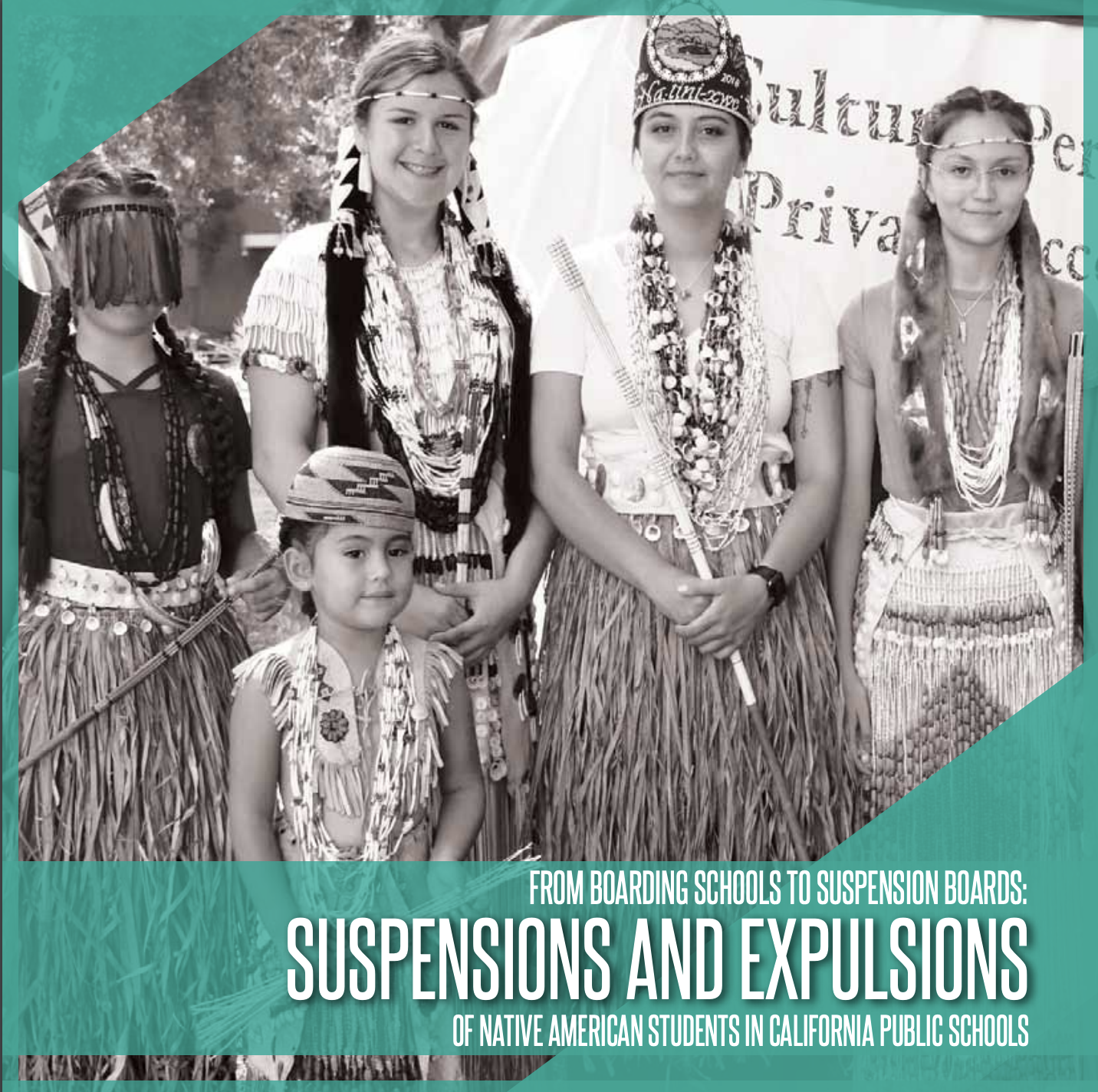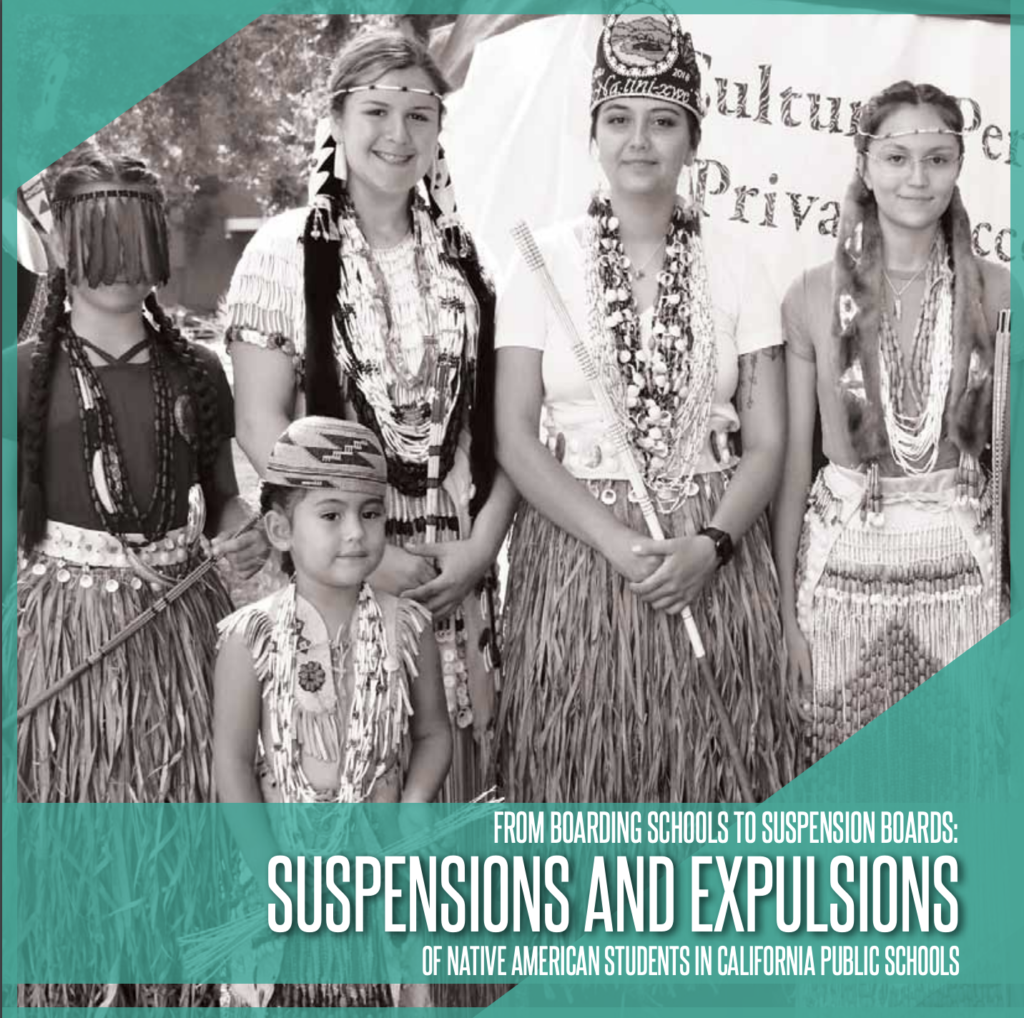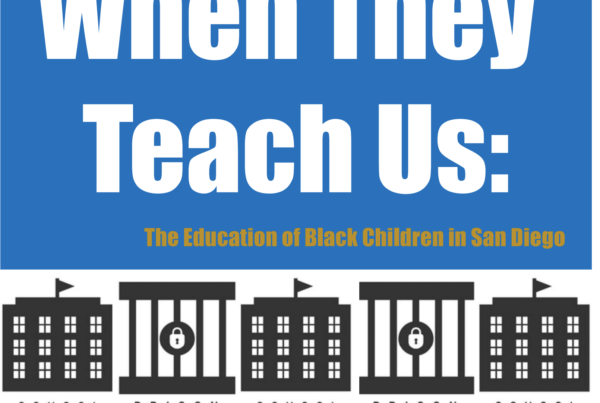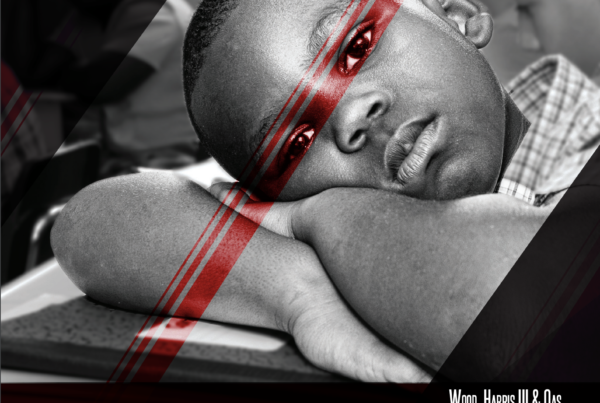This report is a joint publication of the Sacramento Native American Higher Education Collaborative (SNAHEC) and the Community College Equity Assessment Lab (CCEAL) at San Diego State University (SDSU). This groundbreaking report exposes the dramatic inequities in the treatment of and outcomes for Native American youth in California.
From Boarding Schools to Suspension Boards:
Suspensions and Expulsions of Native American Students in California Public Schools
SNAHEC Contributors: Molly Springer, Ricardo Torres, Tamara Cheshire, Christina Prairie-Chicken, Jesus Valle, Dahlton Brown, Crystal Martinez-Alire, Summer Balfour, Vanessa Esquivido, Michael Veirs, Britta Guerrero, Michelle Villegas-Frazier, Crystal Blue, Matt Archer, and Fiona Pulskamp
CCEAL Contributors: J. Luke Wood and Mohamed Qas
This report is a joint publication of the Sacramento Native American Higher Education Collaborative (SNAHEC) and the Community College Equity Assessment Lab (CCEAL) at San Diego State University (SDSU). This groundbreaking report exposes the dramatic inequities in the treatment of and outcomes for Native American youth in California. We present data from the California Department of Education on school suspensions and expulsions as reported by the institutions in their documentation to the state. We also present narratives contributed by the parents of Native American students. All these data points highlight the ways in which Native American youth in California are criminalized and held back from achievement in our state’s educational system.
Key findings from the report include:
- The statewide suspension rate for Native American children and youth is 7.2%, much higher than the statewide suspension average of 3.5%. Analyses indicated that Native American girls were suspended at a rate of 4.6%. Native American boys were suspended at a rate of 9.6%.
- Native American boys are expelled at a rate that is 4.2 times higher than the state average, representing the highest expulsion rate for any racial/ethnic or gender group. The rate has also been steadily rising over the past four years.
- Early childhood (kindergarten through third grade) is the area with the greatest suspension disparity. Native American boys are 2.5 times more likely to be suspended in early childhood education than boys in the same grade-range, while the rate is 3.7 times greater for Native American girls in comparison to the average for girls.
- The highest percentage of suspensions occurs in middle school (Grades 7 and 8). In middle school, Native American boys are suspended at a rate of 16.5%, while Native American girls are suspended at 9.1%.
- The top counties for suspending Native American boys were Modoc County, Mono County, and Lassen County. Modoc County was the top county suspending both Native American boys at 38% and Native girls at 26.1%.
- Kings County was the top expulsion county for both Native American boys and girls. Native American boys are more than 40 times more likely to be expelled in this county than the statewide average. For Native American girls, the rate is 20 times higher than the statewide average – these rates are egregiously high.
- The number one suspension district for Native American boys in California are Fortuna Union High in Humboldt County. This district suspends more than 71% of their Native American males. This is followed by Modoc Joint Unified in Modoc County at 42.5%.
- The top suspension district for Native American girls is Loleta Union Elementary in Humboldt County. In this district, 32.3% of Native American girls were suspended. This district has long struggled with its service to Native American students, having been the focus of a 2013 Office of Civil Rights investigation for its treatment of Native students.
- Lemoore Union High in Kings County was the number one expulsion district for Native American boys and the number one expulsion district for girls.
Separated they live in Bookmarksgrove right at the coast of the Semantics, a large language ocean. A small river named Duden flows by their place and supplies it with the necessary regelialia. It is a paradisematic country, in which roasted parts of sentences fly into your mouth. Even the all-powerful Pointing has no control about the blind texts it is an almost unorthographic life One day however a small line of blind text by the name of Lorem Ipsum decided to leave for the far World of Grammar.
The Big Oxmox advised her not to do so, because there were thousands of bad Commas, wild Question Marks and devious Semikoli, but the Little Blind Text didn’t listen. She packed her seven versalia, put her initial into the belt and made herself on the way.
l using her.Far far away, behind the word mountains, far from the countries Vokalia and Consonantia, there live the blind texts. Separated they live in Bookmarksgrove right at the coast of the Semantics, a large language ocean. A small river named Duden flows by their place and supplies it with the necessary regelialia.




